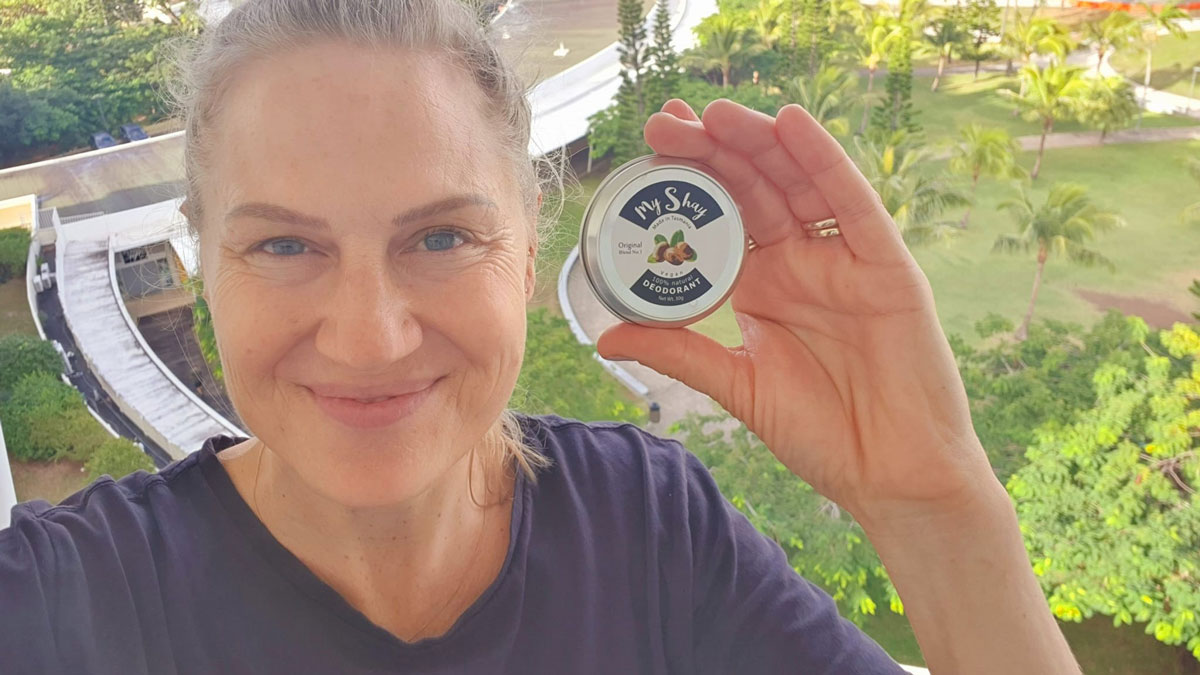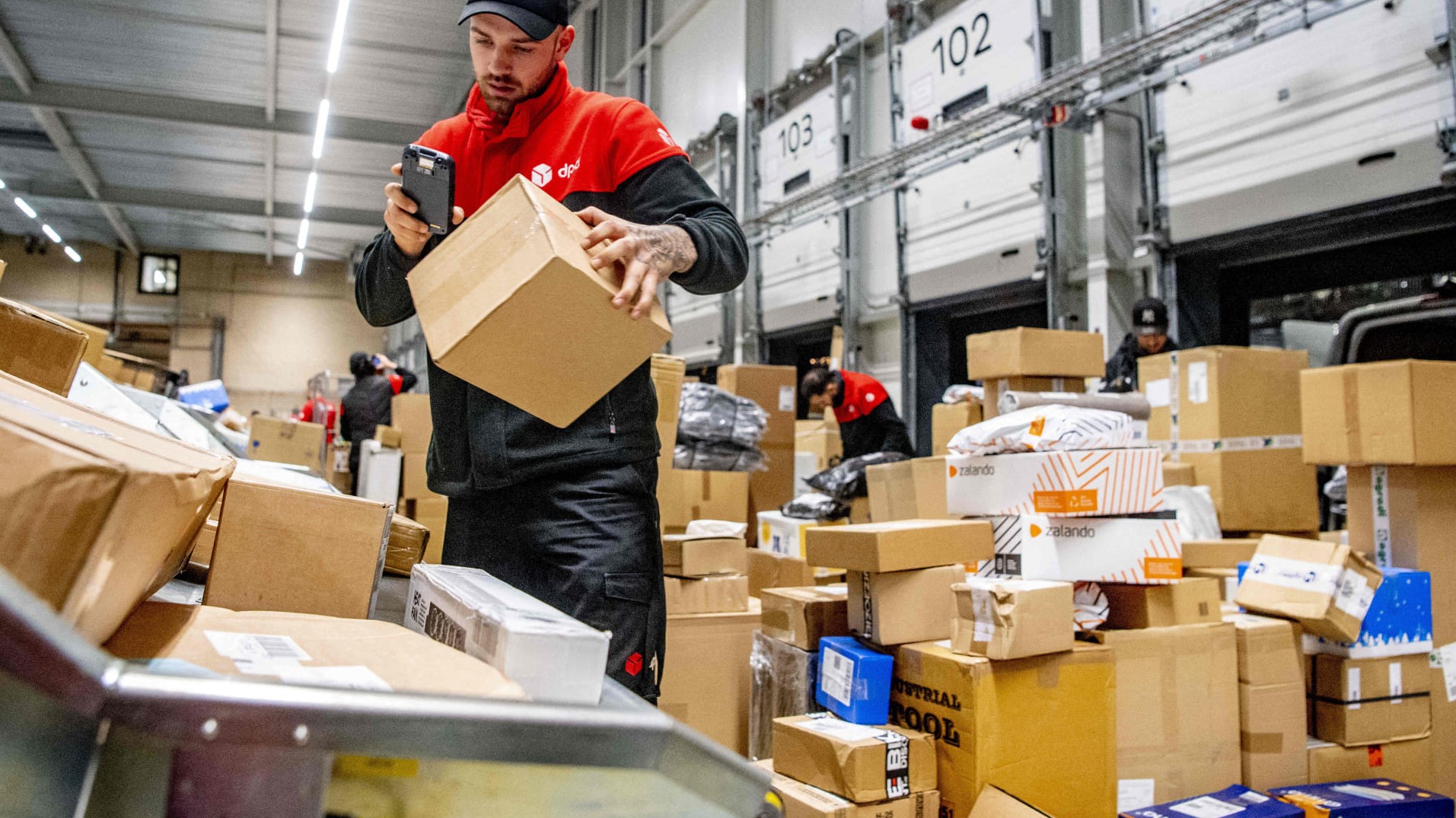Digital trade
Meet Tara Tiefholz: Connecting the real world of e-commerce to trade policy
Published 23 January 2024
The story of Tara Tiefholz, a deodorant e-commerce seller in Tasmania, is an illustration of how vital trade policy is for smaller entrepreneurs. Trade regulation doesn't always work for MSMEs. Policymakers must address the pain points if they want to help grow exports.
The top selling products on e-commerce platforms change regularly. But one category that can reliably be found on any list of trending goods sold by independent sellers is cosmetics and skin care products. Many of these independent sellers are smaller firms that have found a niche and developed a product or a small line of goods to fit a gap in the market.
One such firm, My Shay, was created by a woman in Tasmania, Australia, who wanted to start selling plastic-free deodorant. The founder, Tara Tiefholz, spent considerable time formulating and reformulating her product to be effective as a deodorant and deliverable in the right kind of packaging.
She landed on a reusable metal tin.
I met Tara several years ago as part of a mentorship program for small firms. She was passionate about helping the environment and committed to building a successful company in her local community. Tara was also keen to support others in the mentorship group by sharing her experiences.
Her story is similar to many business entrepreneurs. Like others, while her company was successful and growing with sales across Australia, she was not exporting her products and she wanted to know more about how to become a micro-multinational. This is, after all, one of the biggest benefits available with a shift to digitally enabled trade.
Such a desire to spread her wings and explore new markets is an important part of the journey for many other micro, small and medium enterprises (MSMEs). The rise of e-commerce platforms has made it easier than ever for smaller firms across the globe to find new customers and markets.
But it is not, perhaps, as easy to engage in cross-border trade as might be expected. Certainly, it can be much harder than many government policymakers expect, which is perhaps why so many MSMEs do not export. The pre-Covid pandemic figures for Australia showed less than 5% of the value of exports came from smaller firms. Given the growth that can come from engaging in trade, failure to encourage more firms to look outside of their domestic market means lower economic growth, overall, than might otherwise be possible.
There are myriad reasons for small firms to struggle with exporting. This piece covers just four: logistics, payments, product standards and testing, and small size.
The first challenge has to do with getting the product from where it is to where it needs to be. Tara started the company for her livelihood and, eventually, to hire staff. Many small businesses have a passionate connection to their local community and a strong desire to create and grow jobs nearby. Tara’s location in remote Tasmania, an island off the southeastern tip of Australia, meant that the costs of shipping and logistics were going to feature prominently.
In Tara’s case, she created her product with shipping in mind, crafting one that could be slipped into an envelope for mailing to customers. She thought carefully about the weight of the metal tin to ensure that it could be sent in this manner, solving one key stumbling block to many firms by lowering her shipping costs.
However, international shipping fees are always a challenge, with rates dependent on the final destination. This is probably an obvious point, but it gives rise to a new set of issues for smaller businesses — they need to carefully account for the costs of logistics when quoting prices to customers. Many small firms trip up over the unexpected costs of shipping to new markets, as well as navigating the paperwork that can be required to send goods to different markets.
Paperwork requirements and formats of documents can vary as well, which create additional obstacles and complexity to firms trying to manage international shipments. Many companies may have only a handful of employees, making every minute spent trying to sort out paperwork and look up information especially costly.
The difficulties in managing payments for their products from multiple markets can also be challenging for small firms. Not every potential customer will have a credit card or payment system that is compatible with the small firm. Nor will firms always have payment processing abilities set up with their own bank or local payment platforms that can match the payment options that customers have available.
It is also important to note that, even if payments are available, the speed and costs of managing payments can be too steep for many smaller firms. A system that takes days to clear a payment can be impossible for MSMEs to manage. High transaction and exchange rate fees can wipe out the entire profit margin on something like a package of deodorant.
One particular challenge that comes from selling cosmetics and skin products is meeting product safety standards in foreign markets, as these can be different from local standards. Testing requirements can be difficult or impossible for small exporters to manage as well, as many local markets may not have a suitable facility nearby able to provide any required documentation in the format needed by foreign officials to clear the shipment across the border.
One way that Tara managed this complexity was to take advantage of opportunities for learning, like the mentorship program which included feedback from individuals at larger firms regarding logistics and listening to potential solutions provided by her peers from across the region. There are several sources for information that have been set up explicitly for use by small companies but finding the details can be challenging for time-challenged individuals. Having materials presented in one place can also help solve specific problems for companies.
Finally, a significant obstacle to exporting goods is that small firms are small. This means that they have limited capital and finite resources. They do not have the capacity to investigate many options or a deep understanding of the risks and challenges of sending products overseas. They do not have the money to pay for expertise and are often so excited at the prospect of gaining customers in new markets that they overlook potential risks.
The challenges of running a firm for smaller founders can be overwhelming. Regulatory and policy obstacles simply add to the burden. Even the most committed can eventually tire of the tasks of managing the company. Tara has recently decided to explore selling her firm, knowing that any buyer may not decide to keep the company located in Tasmania or may even decide to move it out of Australia.
The regulation of these four challenges — logistics, payments, standards, and size — are not always part of the regular remit of trade officials. Even when topics like logistics are on a government’s trade agenda, the proposed solutions may not be directly relevant to a small firm trying to send deodorant to an overseas customer. Cross-border payments are only now getting onto the radar of trade talks, but most commitments remain at the level of cooperation and dialogue rather than work on interoperable payments mechanisms. For most trade officials, standards are addressed by suggesting that they should be based on science and not more trade restrictive than necessary. But this is far from agreeing to harmonized standards, which is what smaller firms might find most suitable. The small size of firms and the limitations that come with constrained resources are not sufficiently addressed in trade policy.
It is not, it should be emphasized, that trade policy is irrelevant for small businesses. In fact, it is vital. But much of the work of getting a suitable ecosystem of supportive policies takes place only in the background for companies. Economies that get trade right give firms fewer impediments to exports. Those that do a poor job have fewer MSMEs that can manage the hurdles that flummox small companies.
As MSMEs are the backbone of every economy, getting trade policies to best support smaller firms engaging in trade can facilitate economic growth and drive jobs. But doing so requires government policymakers to have a realistic understanding of the actual challenges faced by MSMEs and a plan to try to tackle the biggest pain points. Otherwise, it can be too easy to overlook issues on the ground and create grand plans and outcomes that do little to address the obstacles that make it difficult or impossible for MSMEs to thrive and grow.
© The Hinrich Foundation. See our website Terms and conditions for our copyright and reprint policy. All statements of fact and the views, conclusions and recommendations expressed in this publication are the sole responsibility of the author(s).





